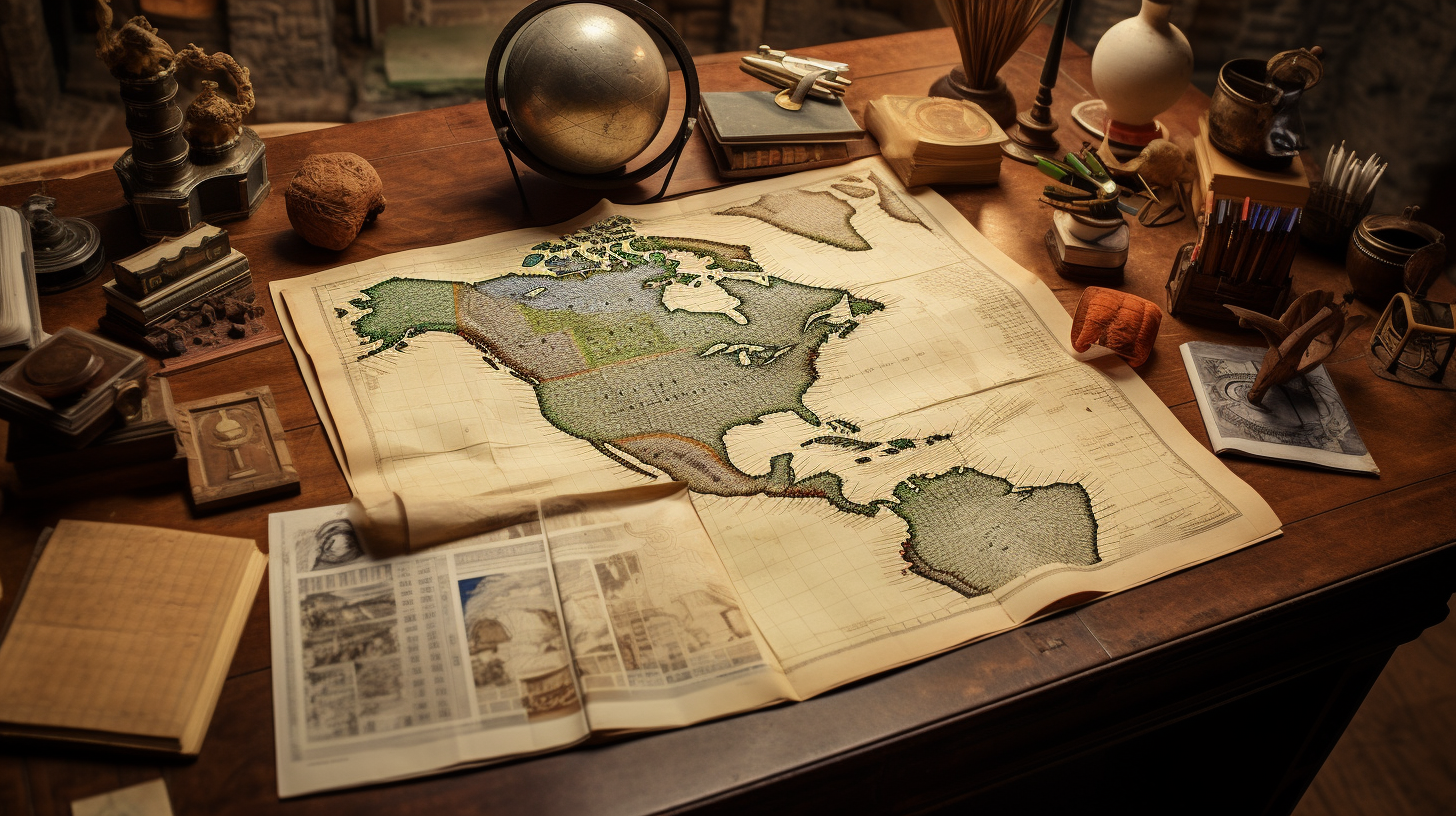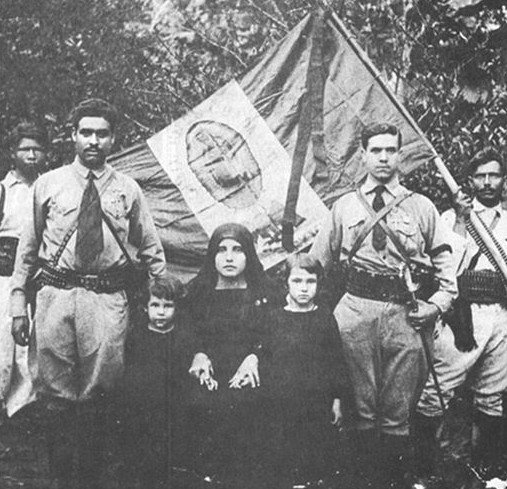
Articles

Mexican States
Southwest United States
Heritage and Governance
Indigenous Jalisco in the Sixteenth Century: A Region in Transition
The State of Jalisco is the ancestral home of many Mexican Americans. However, very few people much about the history of Jalisco’s Indigenous people. Five centuries ago, the State of Jalisco had a very dynamic and diverse Indigenous population, but that changed with the conquests of Nuño de Guzmán. In this article, we explore the native groups that inhabited every corner of Jalisco in the Sixteenth Century. Today, they live on through you, their descendants.
Mexican Colonial Migration as a Catalyst for Assimilation (1550-1821)
For centuries, Mexico has led the world in silver production. In 1546, during Mexico’s colonial period, silver was first discovered in Zacatecas, but many more mines would be opened up in the next two centuries. According to Michael M. Swann, “Migrants in the Mexican North,” the “silver centers attracted large, mixed populations from great distances.
Who Were the Chichimecas? Exploring Their Legacy
The nature of the so-called Chichimecas has varied in time and place. Originally the Spaniards and their Indigenous allies referred to the semi-nomadic people who inhabited the frontier area of Nueva Galicia as Chichimecas. They waged a 40-year-war against them. But two hundred years later, the Spaniards also used the term for the nomadic Coahuiltecan tribes of the northeast.
Lagos de Moreno: The Gateway to Jalisco
Lagos de Moreno, located in the northeast corner of the Mexican state of Jalisco, is an important commercial hub in the central Mexico region. While Aguascalientes lay eighty miles to the northwest, the city of Leon (in Guanajuato) is only forty miles to the east, and Mexico City is 445 miles to the south. Lagos de Moreno represents one of the twenty-four municipios that makes up the Los Altos region of Jalisco, an area that is defined by its socioeconomic and geographic nature and shares a common cultural history.
The Brutal Reign of Nuño Beltrán de Guzmán
Nuño Beltrán de Guzmán served as the Governor of the provinces of Pánuco and Nueva Galicia a decade after Cortés had destroyed the Aztec Empire. As a conqueror, he succeeded in bringing a vast new territory under the domain of the Spanish Empire. However, as an administrator, Nuño de Guzmán terrorized both Spaniards and Indigenous people who stood in his way. Eventually, his slave-trading activities brought an end to his reign of terror.
The Ruvalcaba Lineage Report
The following lineage report traces the ancestors of Jose Geronimo Ruvalcaba (1817-1884) who lived in Rincón de Romos, Aguascalientes. As is the case for many inhabitants of Aguascalientes, he was a descendant of the Ruiz de Esparza and Rubalcava families that came to Mexico in the Sixteenth Century. The origins of the González de Rubalcava family will be discussed in greater detail at the end of the report.
The Early History and Settlement of Guadalajara
Do you have ancestors who settled in Guadalajara in the 1530s or 1540s? Or do you have ancestors that lived in the region of the Cocas and Tecuexes long before there was a place the Spaniards named Guadalajara? Most likely, you have both. We will talk about the foundation and the early evolution of Guadalajara, which today is the second largest city in Mexico.
Tracing One Mixed-Race Family Across the Generations
This article explores the genealogy and history of a mixed-race family within its historical context. It includes discussions of past events, social norms, and terminology that were used during different periods. We approach these historical aspects with the intention of providing historical insights. We aim to foster understanding of diverse historical experiences while respecting sensitivities.
Tracing Your Indigenous Roots in Jalisco
Today, Jalisco is the seventh largest state of Mexico with the fourth largest population. Its diverse terrain gave rise to an incredible diversity of tribal groups. Professor Eric Van Young has noted that the area of central Jalisco “supported relatively dense populations” and a “considerable ethnolinguistic variety prevailed within a fairly small geographic area.” But thanks to the Spanish conquest, Dr. Van Young also notes that “the extensive and deep- running mestizaje of the area has meant that at any time much beyond the close of the colonial period the history of the native peoples has been progressively interwoven with (or submerged in) that of non-native groups.”
An Indigenous Family from Ayutla, Jalisco
Exploring the genealogy of an Indigenous family in Ayutla, Jalisco, throughout the 17th and 18th centuries highlights the vital role of post-1800 baptism records from Jalisco in advancing genealogical research. Ayutla, situated within Jalisco, was home to Indigenous communities fluent in Náhuatl and Cuyuteco languages. This journey reveals intriguing patterns, where some Indigenous individuals maintained consistent surnames across generations, while others embraced surnames solely upon marriage or the birth of their children.
The Indigenous Tolentino Family of Nochistlán, Zacatecas: Seven Generations
Researching the ancestry of Indigenous families in historical Jalisco, Zacatecas, and Aguascalientes presents unique challenges. During the 17th and 18th centuries, it was common for many Indigenous People not to have consistent surnames. This inconsistency could be attributed to various factors, including changes in employment or land ownership. Unlike the Spanish who typically maintained a strong attachment to their surnames, Indigenous People often adapted or altered their surnames, sometimes opting not to use one at all. This fluid approach to naming makes tracing lineage a complex but fascinating endeavor.
Tracing Six Indigenous Generations in Lagos de Moreno, Jalisco
Tracing an indigenous family backwards in time can be an interesting challenge for the Jalisco Researcher. Many Indigenous people in the 17th and 18th Century Jalisco, Zacatecas and Aguascalientes did not even have surnames. Or they had surnames that changed from generation to the generation, possibly depending on their employer or owner of the land they lived on. In many areas, Indigenous people – for very understandable reasons – did not have the same loyalty to their surnames as Spaniards did. Hence, one surname might be discarded for another surname… or no surname at all.
The Native People of Nueva Vizcaya and Nueva Galicia
The following tables contain information of the native people of the Spanish jurisdictions in Nueva Galicia, Nueva Vizcaya, Sonora and Sinaloa. These extracts primarily contain information about the indigenous groups occupying these areas at the time of the Spanish contact, the year of which varies from one place to another. However, Peter Gerhard’s book contains a wealth of local information, and it is highly recommended that interested researchers purchase the book to have access to all the information provided.
Indigenous Nueva Galicia: The Native Peoples of Jalisco and Zacatecas
Established in 1548, the Spanish province of Nueva Galicia embraced 180,000 kilometers and included most of present-day Jalisco, Nayarit, Aguascalientes and Zacatecas. Across this broad range of territory a wide array of indigenous groups lived during the Sixteenth Century. The old Aztec empire had been replaced with Nueva España.
The Cristero Rebellion: Its Origins and Aftermath
The Cristero Rebellion – also known as La Cristiada – was a popular uprising in 1926-29 of Catholic peasants in the central-western Mexican states against the secularist, anti-Catholic and anti-clerical policies of the Mexican government under President Plutarco Elías Calles. The rebellion took place in response to the imposition of the Calles Law which strictly enforced the secularist and anticlerical articles of the 1917 Constitution of Mexico.
Exploring Jalisco’s Indigenous People: Past and Present
Today, Jalisco is the seventh largest state of Mexico with a diverse terrain that gave rise to an incredible diversity of tribal groups. Professor Eric Van Young has noted that the area of central Jalisco “supported relatively dense populations” and a “considerable ethnolinguistic variety prevailed within a fairly small geographic area.” But the expedition of Nuño de Guzmán (1529-1531) changed everything and many tribal groups were decimated during the next two decades, especially after the Mixtón Revolt (1540-1541).
Indigenous Jalisco and the Census
From 1895 to 2015, the Mexican census has painted a picture of Mexico’s people, providing details about languages spoken (Spanish, foreign and indigenous), religion, education, literacy, employment and migration. From the beginning, the Mexican census provided details about indigenous languages spoken by its citizens. However, in the first half century, it is possible that there were undercounts of indigenous language speakers because some may have failed to declare their language status for fear of affecting their position within the community. In addition, poor communications channels with rural, isolated indigenous communities may also have caused an undercount of the indigenous people.
Navigating FamilySearch.org for Mexican Records
The most important FamilySearch.org link is the following one, which leads you to 66 Mexican collections, primarily Catholic Church records (going back, in some cases, to the 1500s and 1600s) and Civil Registry records (for municipio records).
Indigenous Jalisco: From the Spanish Contact to 2010
The modern state of Jalisco consists of 78,597 square kilometers located in the west central portion of the Mexican Republic and taking up 4.0% of the national territory. As the seventh largest state in Mexico, Jalisco is politically divided into 124 municipios. With a 2010 population of about 7,844,830 inhabitants, Jalisco has the fourth largest population in Mexico with 6.6% of the national population.
Who Were the Chichimecas?
If your ancestors are from Zacatecas, Guanajuato, Aguascalientes, Jalisco or San Luis Potosí, it is likely that you are descended from the indigenous peoples who inhabited these areas before the Spaniards arrived from the south. The historian Eric Van Young of the University of California at San Diego has called this area, the “the Center-West Region” of Mexico. This cultural region, according to Dr. Van Young, amounts to about one-tenth of Mexico’s present-day national territory.

Article Categories
- Aguascalientes 14
- Arizona 4
- Baja California 5
- Baja California Sur 2
- California 19
- Campeche 4
- Census 36
- Chiapas 3
- Chihuahua 11
- Coahuila 7
- Colima 1
- Conquistador Chronicles 2
- Durango 2
- Ethnic Identity 40
- Genealogy 35
- Guanajuato 8
- Guerrero 8
- Hidalgo 2
- Indigenous Insights 97
- Jalisco 25
- Mexico City 11
- Michoacan 7
- Morelos 4
- Nayarit 3
- New Mexico 4
- Nuevo Leon 7
- Oaxaca 6
- Politics 10
- Puebla 5
- Queretaro 1
- Quintana Roo 4
- San Luis Potosi 11
- Sinaloa 6
- Sonora 16
- Southwest US 26
- State of Mexico 5
- Tabasco 3
- Tamaulipas 11
- Texas 7
- Tlaxcala 7
- Veracruz 6
- Yucatan 6
- Zacatecas 13





















